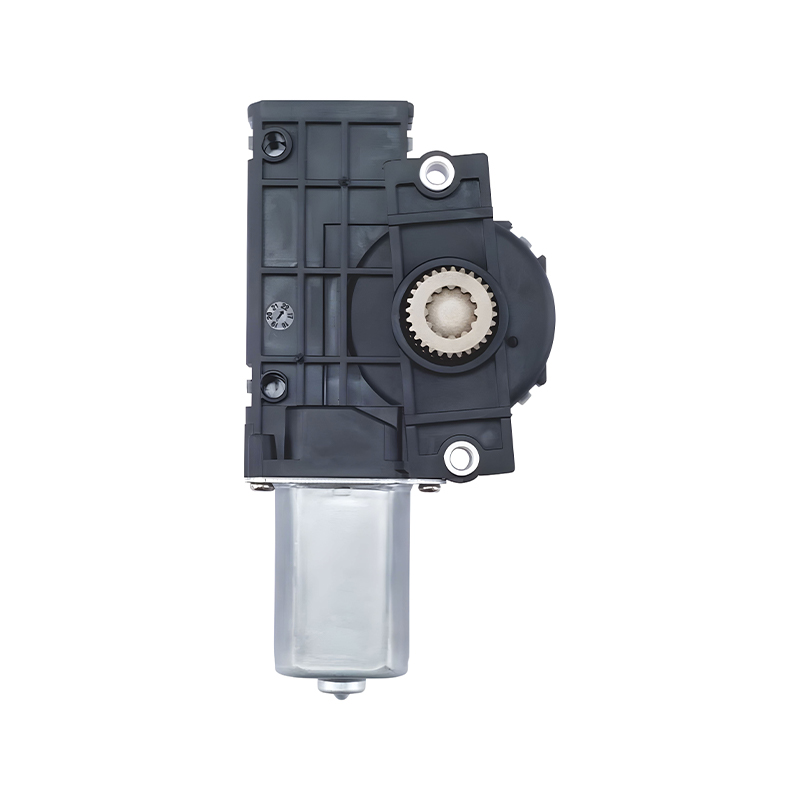The seat height motor plays a critical role in modern automotive seating systems, providing drivers and passengers with the ability to adjust their seating position for comfort and safety. Among various motors used in vehicles, the seat height motor stands out as an essential component responsible for the vertical movement of the seat. Engineered specifically for stable output, this motor ensures consistent and reliable performance over long periods of use.
In the design and manufacturing of a seat height motor, several factors come into play to guarantee its durability and stability. One key aspect is the precise integration of industrial motor parts that contribute to smooth mechanical motion and small noise. Components such as gears, bearings, and windings are carefully selected and assembled to maintain consistent torque and avoid fluctuations that could affect the user experience.
The front seat motor, which includes the seat height motor as part of its subsystem, demands high reliability because it directly impacts driver ergonomics. When a driver adjusts the seat height, the motor's output must be stable to prevent sudden movements or unintended shifts. This stability not only enhances comfort but also ensures safety, as an improperly adjusted seat can affect control and visibility.

A well-engineered seat height motor achieves stability through careful balancing of its mechanical and electrical components. Industrial motor parts used in its assembly are subject to stringent quality controls to maintain uniform performance standards. For instance, gears made from durable materials reduce wear over time, while bearings with precise tolerances have less friction and mechanical play. Together, these parts help deliver a consistent force, even during repeated adjustments.
Moreover, the electrical design of the seat height motor contributes to its stable output. The motor windings are optimized to produce steady torque across different voltage levels, preventing abrupt changes in speed or power. This means the seat height motor can perform reliably, whether the vehicle is starting cold or running for an extended period. The control circuitry works alongside these components to regulate power delivery, adapting to load variations to maintain smooth operation.
The front seat motor's stable output is crucial not just for comfort but for integration with other automotive systems. Modern vehicles often incorporate sensors and memory functions that rely on precise motor control to restore seating positions automatically. A stable seat height motor ensures that these automated adjustments are accurate and repeatable, which adds to the overall user satisfaction.
Using high-quality industrial motor parts also contributes to the seat height motor. These parts are designed to withstand the stresses of daily use, including exposure to vibration, temperature changes, and mechanical load variations. By resisting wear and fatigue, the motor continues to provide stable output without degradation in performance, reducing the need for frequent repairs or replacements.
The front seat motor system, including the seat height motor, benefits from ongoing improvements in materials and manufacturing processes. Innovations in gear design, bearing technology, and winding insulation enhance the motor's ability to maintain stable output. Additionally, precision assembly techniques ensure that all industrial motor parts fit and function together seamlessly, avoiding issues such as backlash or misalignment that can cause instability.
Another important factor is testing. Every seat height motor undergoes rigorous quality checks to verify its performance under various conditions. Testing simulates real-world use to ensure that the motor maintains stable output over time. This includes repeated cycles of height adjustments, exposure to temperature fluctuations, and vibration endurance tests. Any deviation in motor behavior is addressed before the product reaches the vehicle assembly line.
It's also worth noting that the seat height motor works in coordination with other front seat motor components, such as those controlling seat recline, slide, and lumbar support. Stability in one motor helps improve the overall performance of the entire seat adjustment system. When all motors operate with consistent output, users benefit from smooth, predictable control over their seating position.
In conclusion, the seat height motor engineered for stable output is a vital part of the front seat motor system, relying on carefully selected industrial motor parts to achieve reliable, consistent performance. Through precise mechanical design, optimized electrical components, and rigorous testing, this motor provides smooth vertical seat adjustment that enhances comfort, safety, and user satisfaction. Maintaining stable output under varying conditions ensures that the seat height motor meets the demands of modern automotive applications, contributing to a better driving experience every day.
Your email address will not be published. Required field are marked*